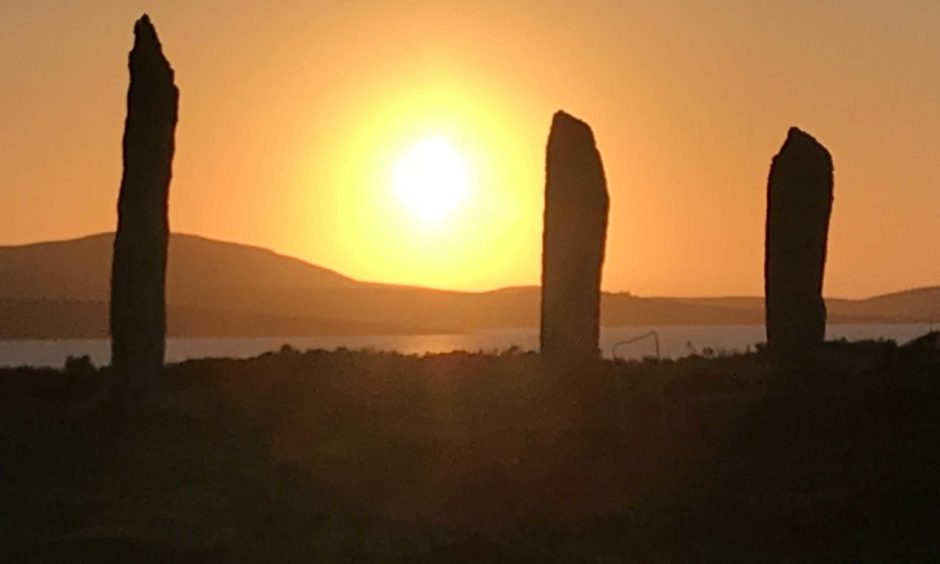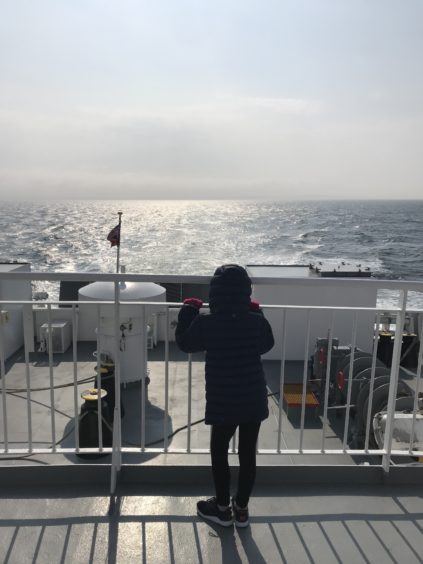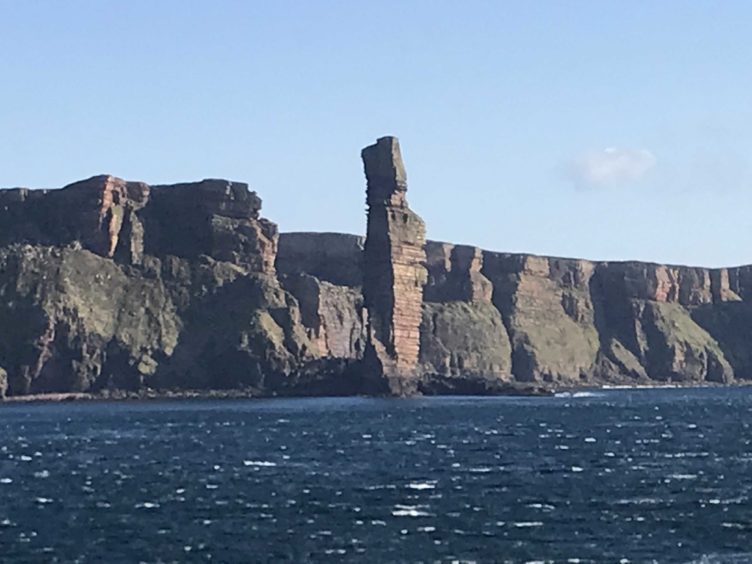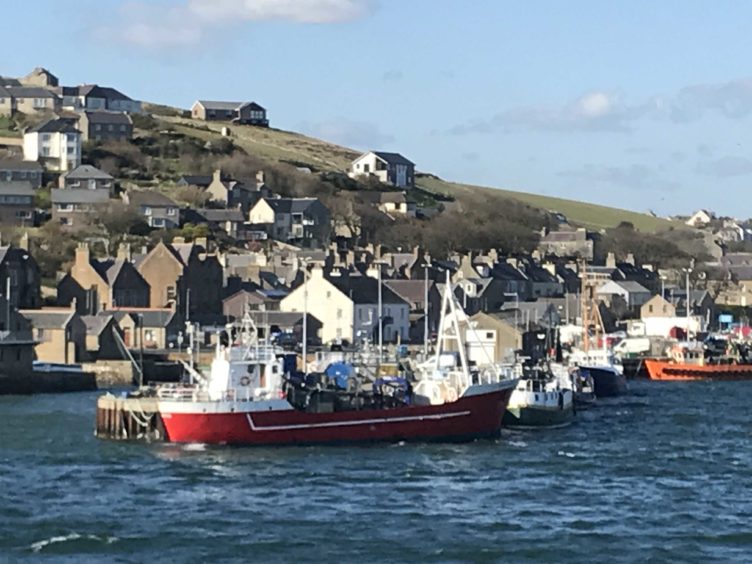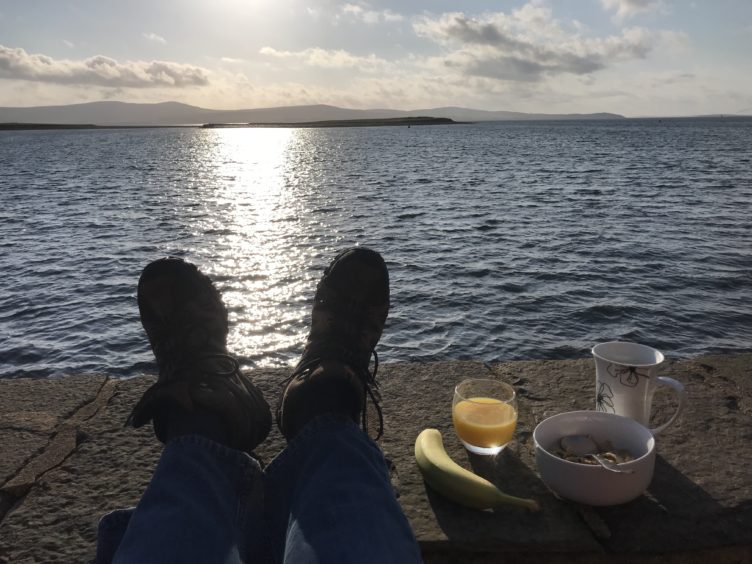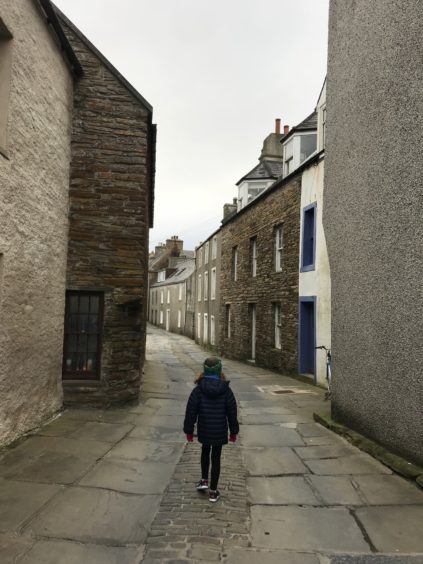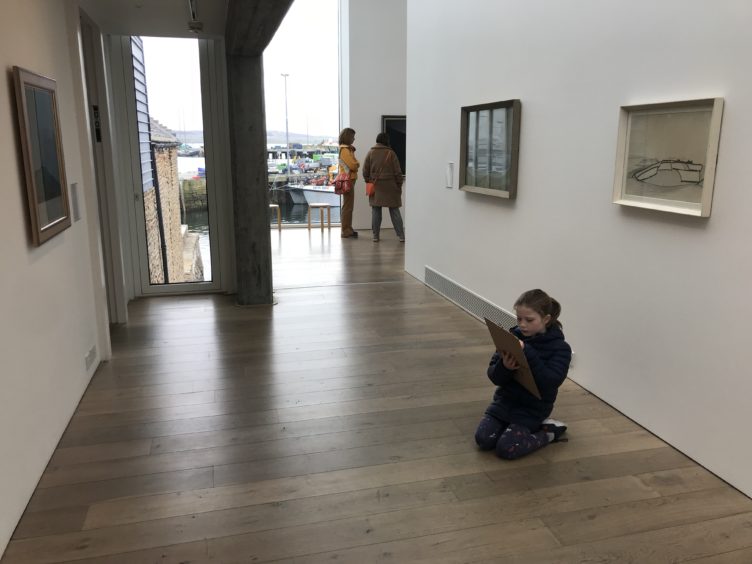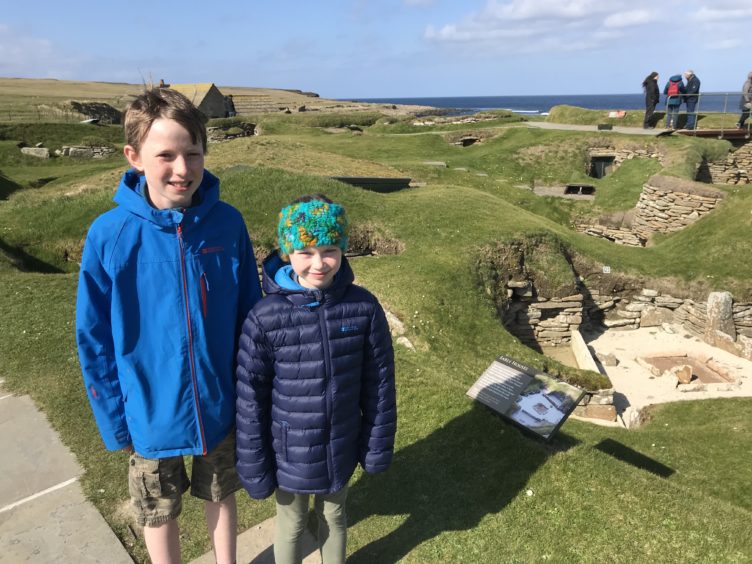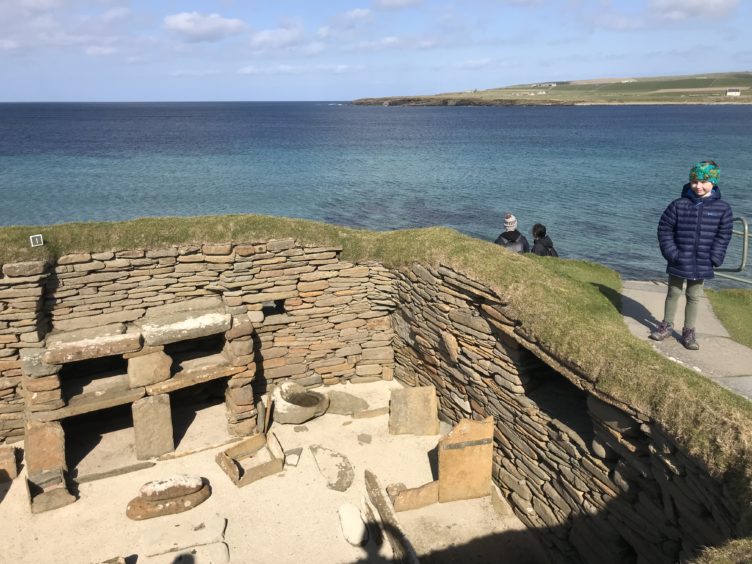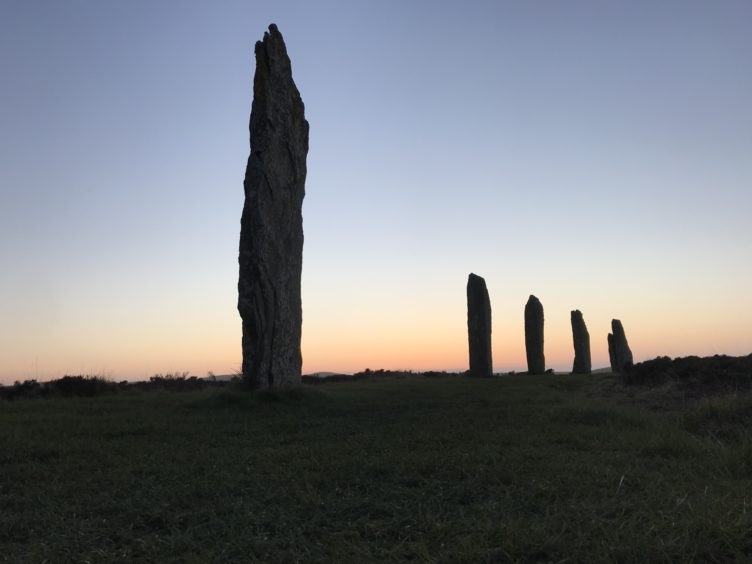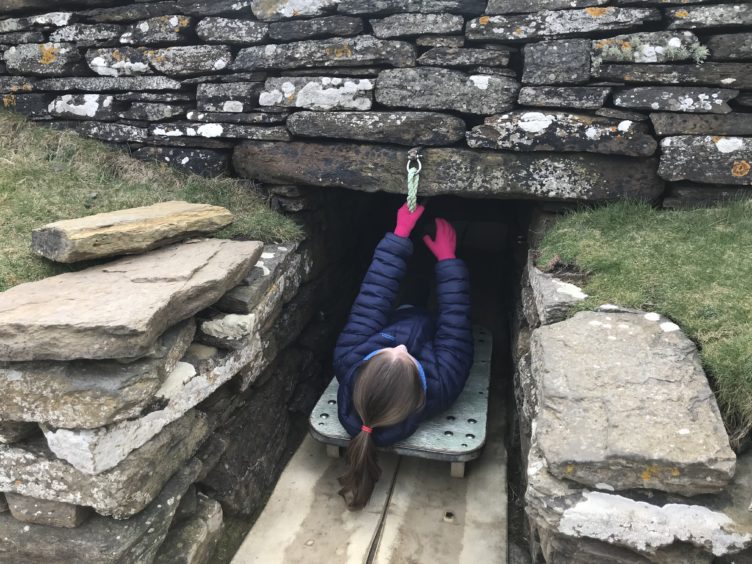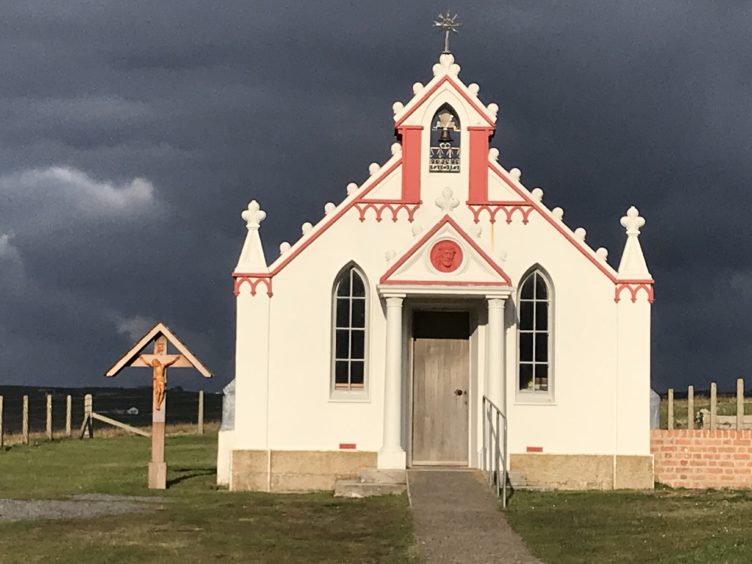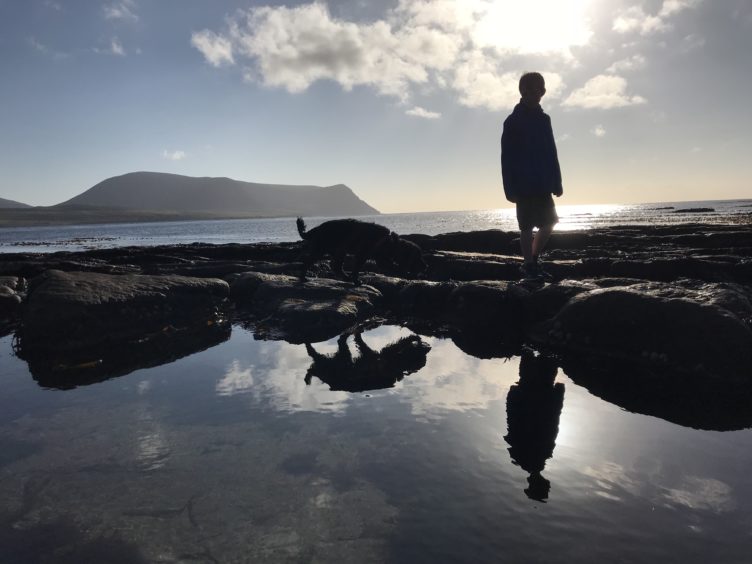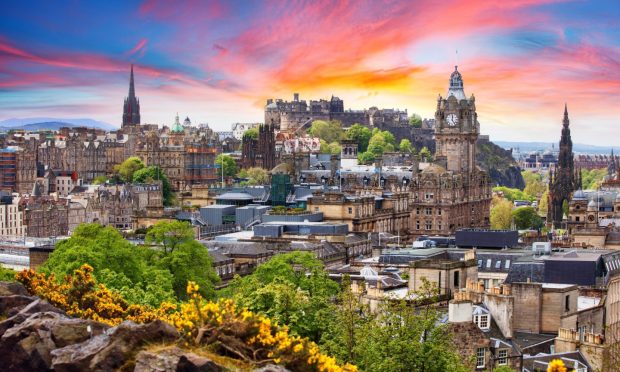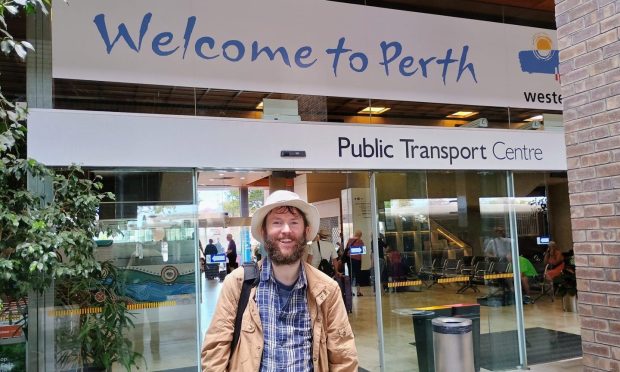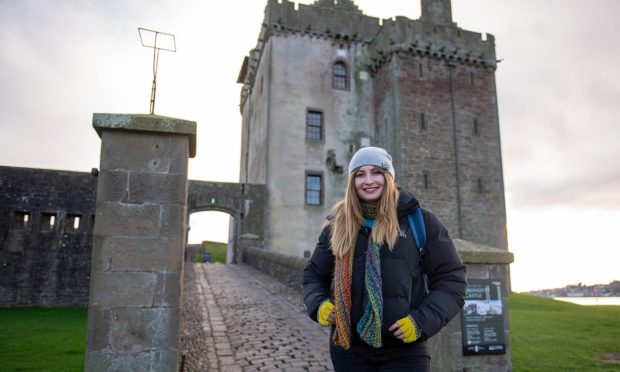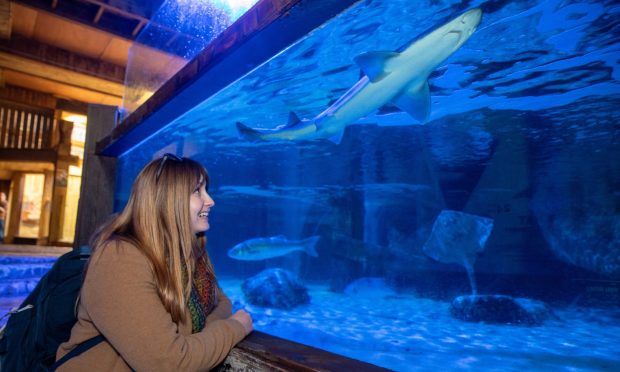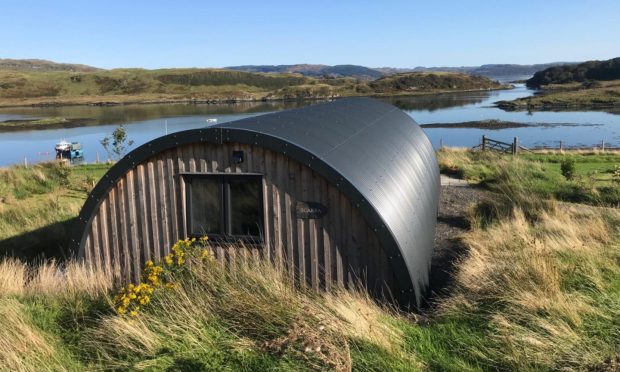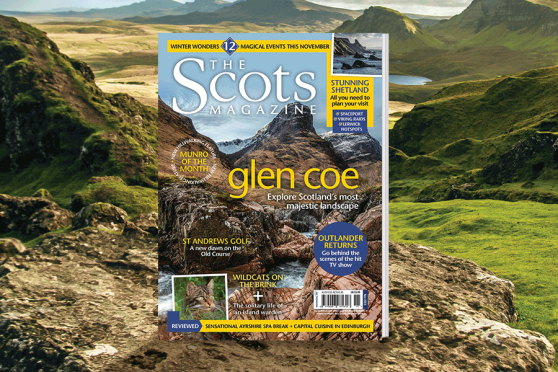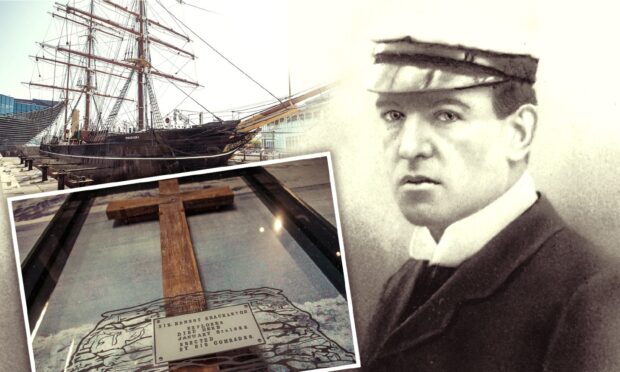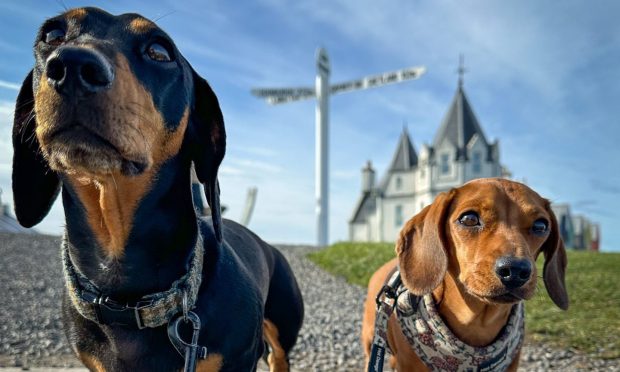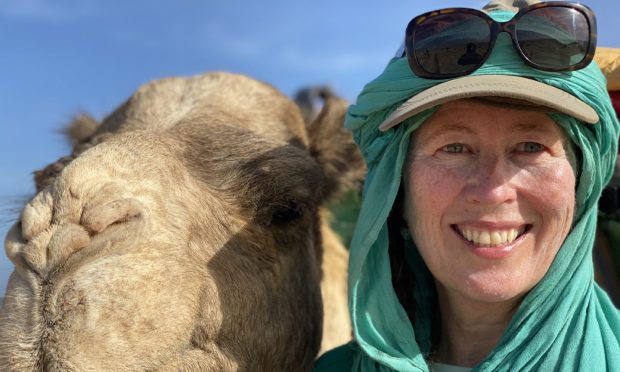Michael Alexander and his family got away from it all with a week on Orkney.
Whoever said life is about focusing on the journey rather than the destination would have been half right if talking about our recent holiday to Orkney.
After breaking our 270-mile drive north with a Friday night stop-over with friends on the Black Isle, we still faced a 2.5 hour journey up the A9 beyond Dornoch the next morning before cutting in land to the north coast ferry terminal at Scrabster and the 1.5 hour crossing over the Pentland Firth to Stromness.
Braving an icy wind and salty spray on the deck of the Northlink ferry Hamnavoe for the duration of the crossing, the experience of watching the famous sea stack the Old Man of Hoy edge closer was simply magical – somehow bringing the passengers closer to nature and in touch with ancient mariners – as the timeless sense of sailing the high seas washed away the stresses of pre-holiday life.
But as we arrived in Stromness – translated into old Norse as ‘headland protruding into the tidal stream’ – the journey did nothing to detract from the destination and what turned out to be an absolutely amazing week long break amid the wilds of nature.
A chance to get away from it all and explore world famous prehistoric sites like Skara Brae, Maeshowe and the Ring of Brodgar were amongst the main reasons why we wanted to visit Orkney.
But as we disembarked from the ferry and drove less than a mile to our Airbnb cottage right on the waterfront overlooking Stromness Harbour, it quickly became apparent that there was so much more imagination-stretching history waiting to be discovered around every corner than we could ever have imagined.
We stayed at Anderson Harbour Cottage at 40 Alfred Street, Stromness – a Scottish heritage site that was once home to Orcadian lifeboat coxswain Robert Greig who was awarded a silver medal for extreme gallantry in 1908.
The former fishermen’s cottage had been beautifully converted into a cosy modern dwelling and, with its own private pier outside, I quickly got into the rhythm of sitting out with a cup of tea – wrapped against the elements – to watch the rise and fall of the tide and to watch the ships roll in, and watch them roll away again…
We were also based less than 100 yards from the wonderful independently-run Stromness Museum – a treasure trove of information and artefacts about natural science, fishing, whaling and the history of the Hudson’s Bay Company which famously recruited from Orkney – one of the remotest parts of Scotland.
During our stay, the museum featured a fascinating special centenary exhibition about the scuttling of the German High Seas Fleet at Scapa Flow in 1919.
However, as we wandered the winding high street to and from the harbour, we were also struck by how much hidden history was marked by blue plaques outside buildings and points of interest.
At Rae’s Close, for example, a plaque told how in 1854 the Orcadian Arctic explorer Dr John Rae discovered the last link in the North West Passage and the tragic fate of the Franklin expedition whose ships Erebus and Terror had taken on water from a now sealed up well at Stromness in 1845.
Another plaque told how between 1835 and 1836, Mrs Humphrey’s House was a temporary hospital for scurvy ridden whale men who had been trapped in the ice for months while another building was formerly a warehouse built in the 1760s originally for American rice trade during the Seven Years War.
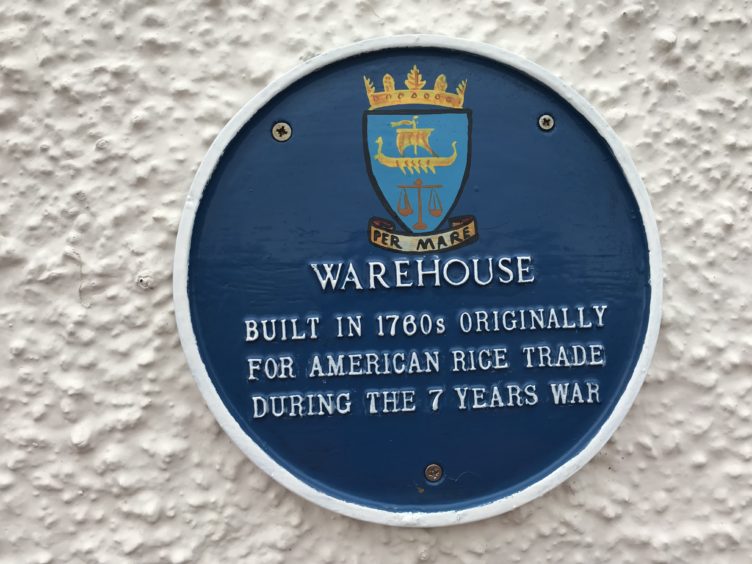
Close by was the home of Eliza Fraser who in 1836 survived a shipwreck on the Great Barrier Reef and capture by Aborigines to become a legendary figure in Australian history.
Other attractions we enjoyed in Stromness included the award-winning five-star Pier Arts Centre.
A trip to the Peedie chip van on our first Saturday night and countless walks along the coastal path to Warbeth beach with spectacular views across to Hoy and the western entrance to Scapa Flow.
It wasn’t long though before we made use of our recently acquired Historic Scotland family membership cards to visit Skara Brae – the world famous stone-built Neolithic settlement located on the Bay of Skaill on the west coast of the mainland.
Older than Stonehenge and the Great Pyramids and consisting of eight clustered houses, it was occupied from roughly 3180 BC to about 2500 BC and, having gained UNESCO World Heritage status, is Europe’s most complete Neolithic village.
The wind swept site is remarkably preserved – yet its proximity to the beach behind a giant coastal defence is a reminder of why its future could be at risk from sea level rise and climate change.
From here, it was the short drive to the Ring of Brodgar – a spectacular ring of standing stones to which I returned one clear skied evening simply because I knew I would be assured some dramatic sunset pictures. I wasn’t disappointed!
The Maeshowe chambered cairn was another must see. Built some 5000 years ago, the entrance passage is aligned with the setting of the midwinter sun so that the light illuminates the tomb’s interior.
In the mid-1100s, Norse crusaders broke into Maeshowe long after it fallen from use. The tour guide who took us into the chamber took great delight in pointing out the Viking graffiti carved in runes all over the main chamber’s walls.
The favourite stop-off for our two children, however, was the Tomb of the Eagles. Perched above the dramatic South Ronaldsay cliffs, the chambered cairn was discovered by chance by local farmer Ronnie Simison in the 1950s, revealing an amazing collection of bones and artefacts placed there 5000 years ago.
A visitor centre run by Ronnie’s daughter gives a chance to hold some of the artefacts while the tomb itself features a memorable ‘Indiana Jones’ type experience of sliding into the chamber by lying on a small trolley and pulling yourself along by a rope.
Other points of interest on Orkney include the Churchill Barriers – a series of four causeways that link the mainland island to South Ronaldsay via Burray and the two smaller islands of Lamb Holm and Glimps Holm.
Also well worth the visit was the Italian Chapel built from Nissan huts by prisoners of war; and the Brough of Birsay where, when the tide goes out, a causeway gives access to the ruins of a remarkable Viking village. St Magnus Cathedral in Kirkwall was also fascinating.
But sometimes the best things about Orkney were simply that feeling of escapism and getting back to nature away from the pressures of the modern world, whether that was walks on remote beaches or watching the sea and bird life in its natural environment.
We’ll certainly be back!
- Michael Alexander and family paid for their own holiday. For more information about Orkney go to www.orkney.com
